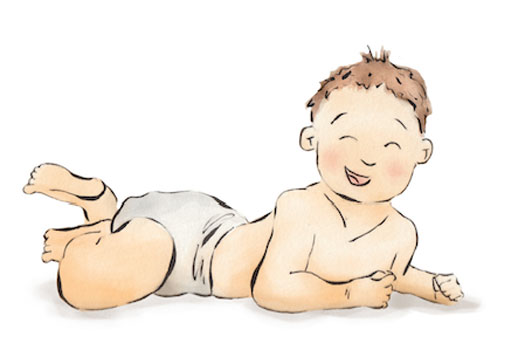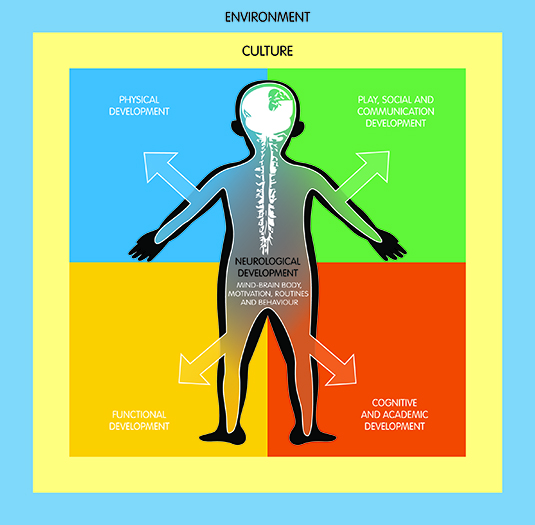Articles
What are the Primitive and Postural Reflexes?

When a child is developing in utero, specific reflexes known as the primitive reflexes are laid down in the brain providing the mechanism for survivial and development after birth.
Within the first 12 weeks of development the brain and central nervous system of the developing foetus are formed. They are already programmed with the mechanisms for sucking, grasping, moving the toes and with a startle response for survival. The reflexes which are most primitive are those of the hands, mouth and feet, and these reflexes are expected to be mature at birth, to enhance the baby's chances of survival. The successful stimulation of these reflexes after birth establishes feeding, builds a sense of security and a regulated cycle of alertness and sleep. The matured reflexes form the foundation for chewing and speech, as well as fine motor skills and balance.

When a baby's movements are first felt by the mother between 15 - 18 weeks of pregnancy, another set of primitive reflexes are emerging. These become mature between 3 - 9 months after birth. These reflexes trigger involuntary movement patterns in the body, facilitating rolling, head control, crawling and finally walking. These reflexes play a fundamental role in the development of the nervous system, as they not only facilitate the motor milestones we see in children under 2 years of age, they also form a sensory awareness of the body and space. They also mature the child's ability to isolate and control their legs and arms, and build postural stability and co-ordination for sports.
The fundamental purpose of these reflexes is to maturate the initially immature neurological system, which is present at birth and stimulates and develops the brain into a motivated, interactive system which supports a child's cognitive development.
This is a complex journey that is perscribed for each and every child. However, each child's journey is different and unique. Hemispheres offers an approach that can assess a child's individual neurological profile and target treatment at the areas of the system which require help.
For further information please read the reflex descriptions on this website.
You might also be interested in

The Hemispheres Conceptual Model - Underpins our way of working.

Hemispheres Pyramid of Development and Learning

The Primitive and Postural Reflexes as defined by Hemispheres
Copyright © 2025 | Privacy Policy


